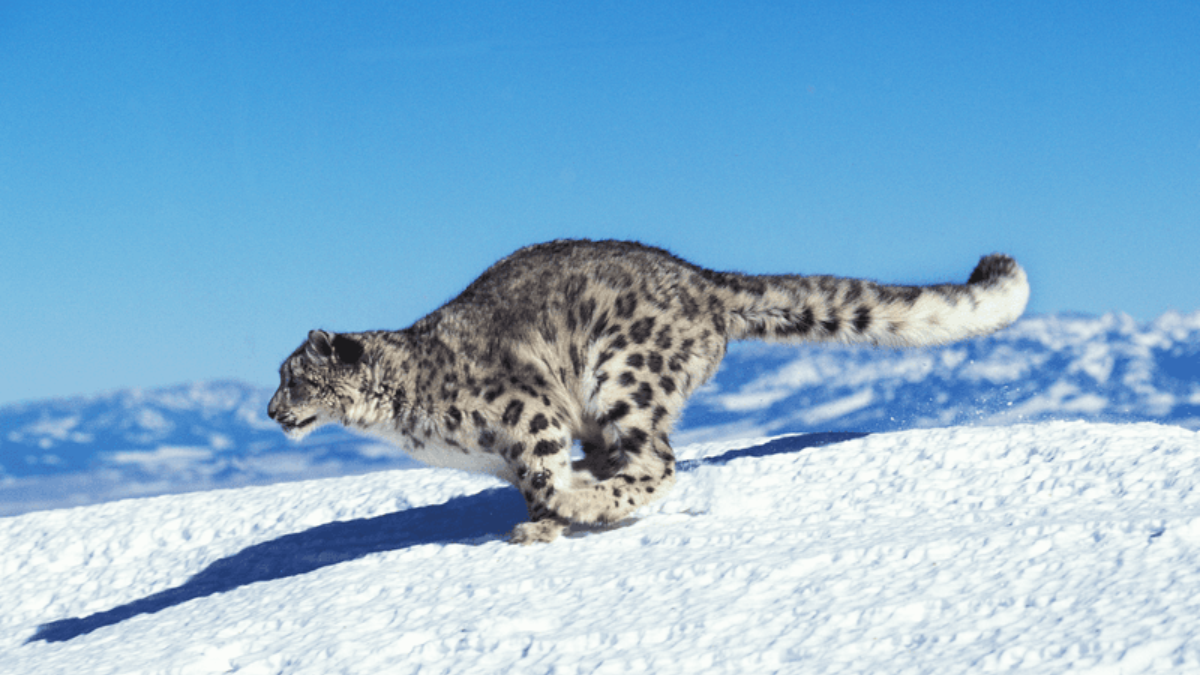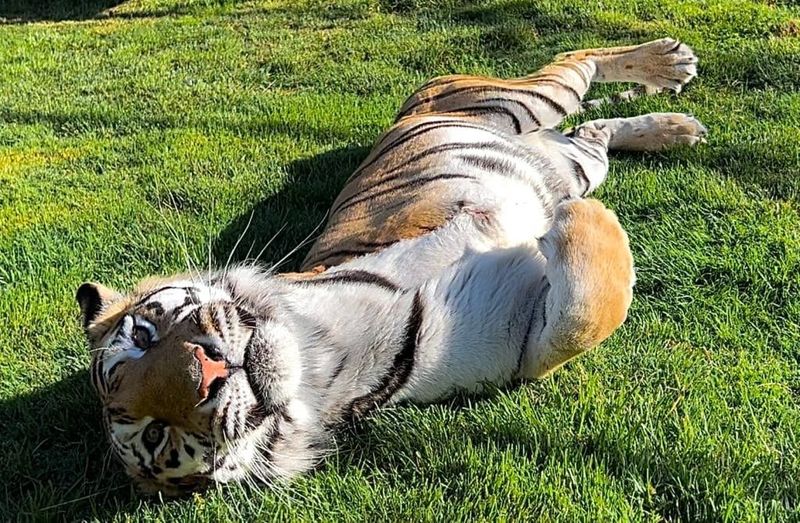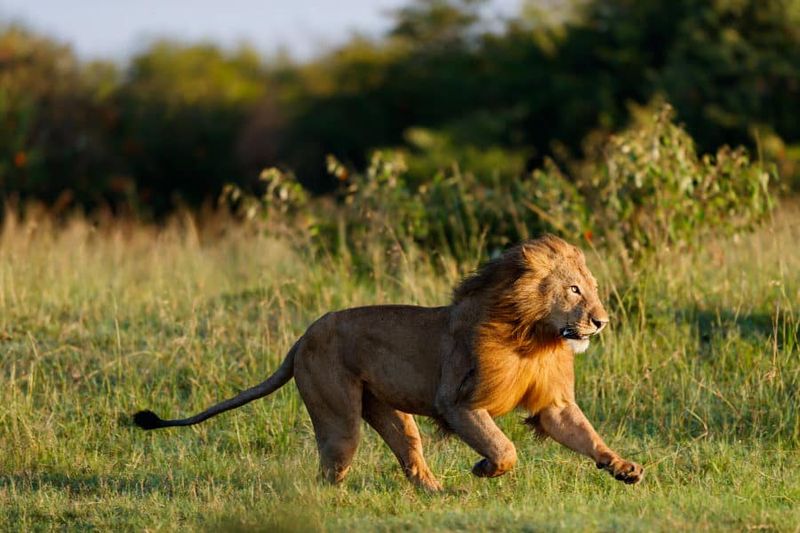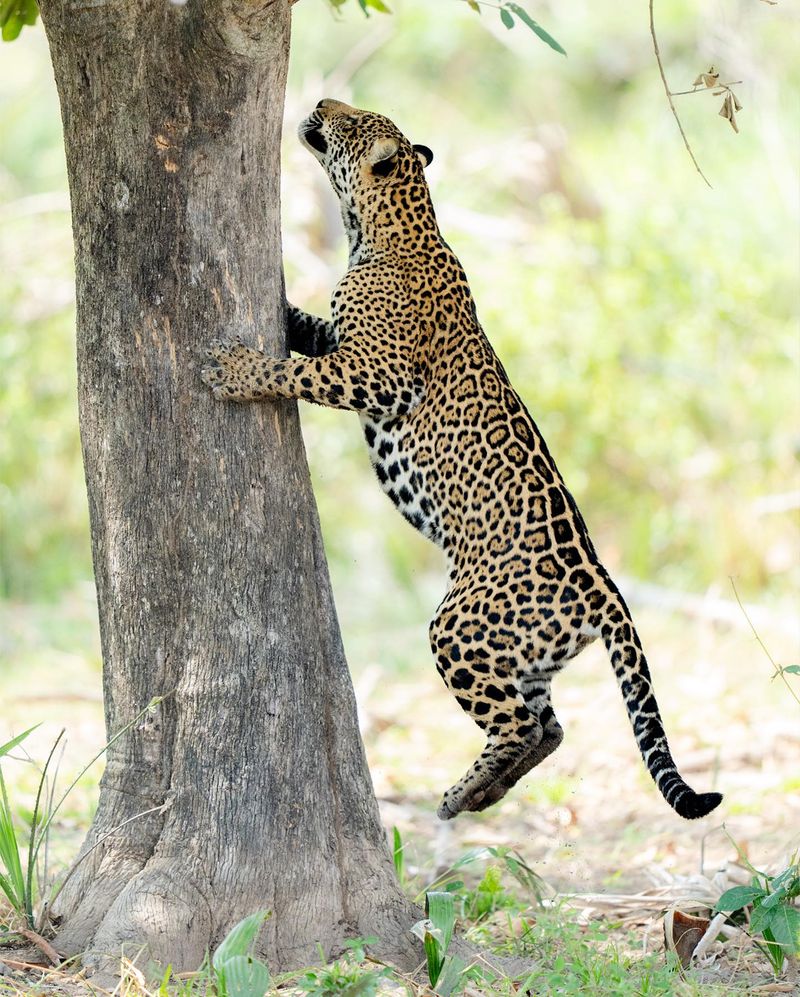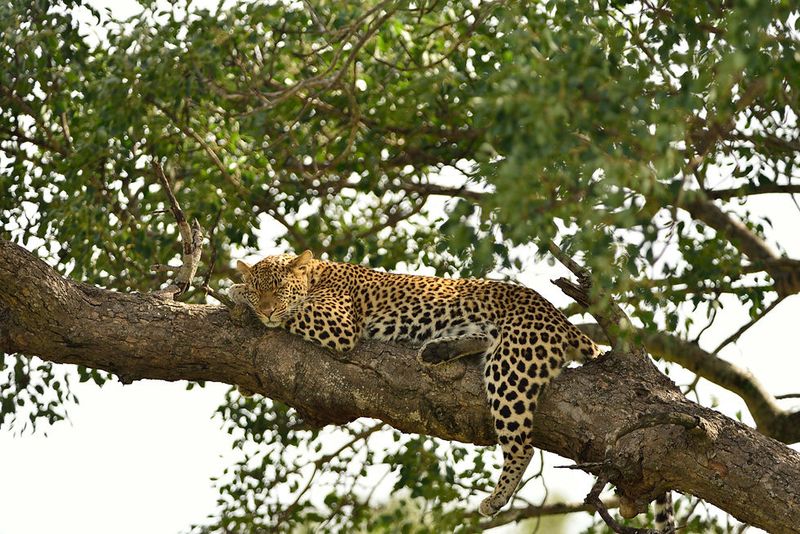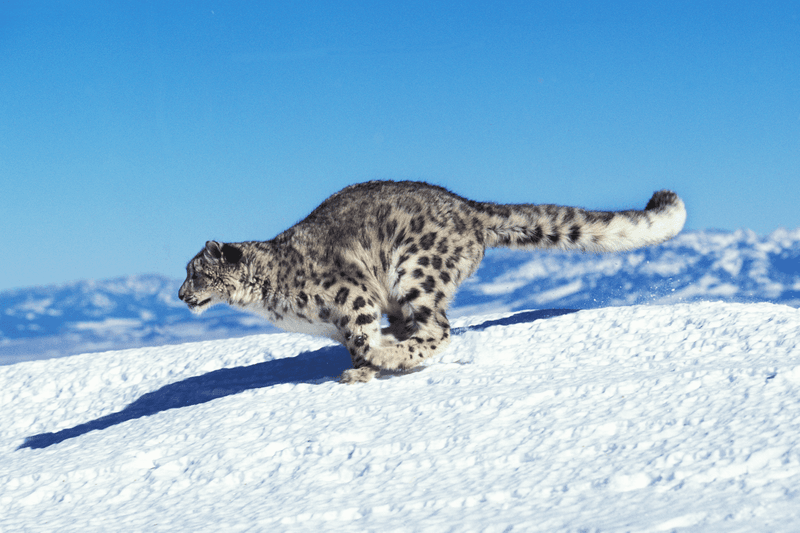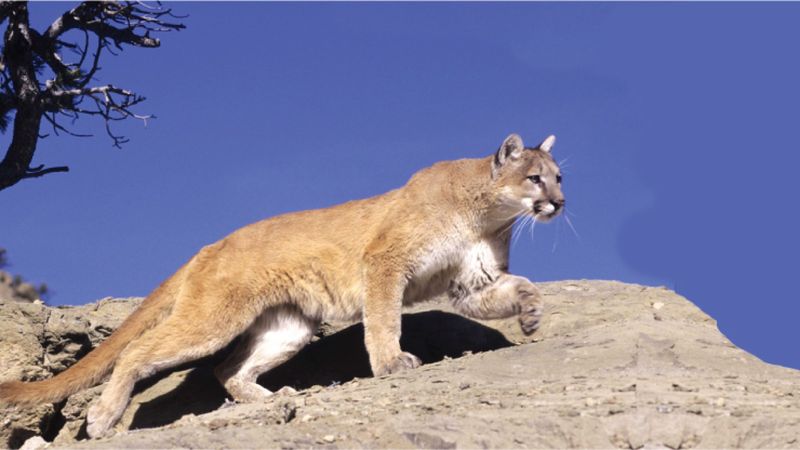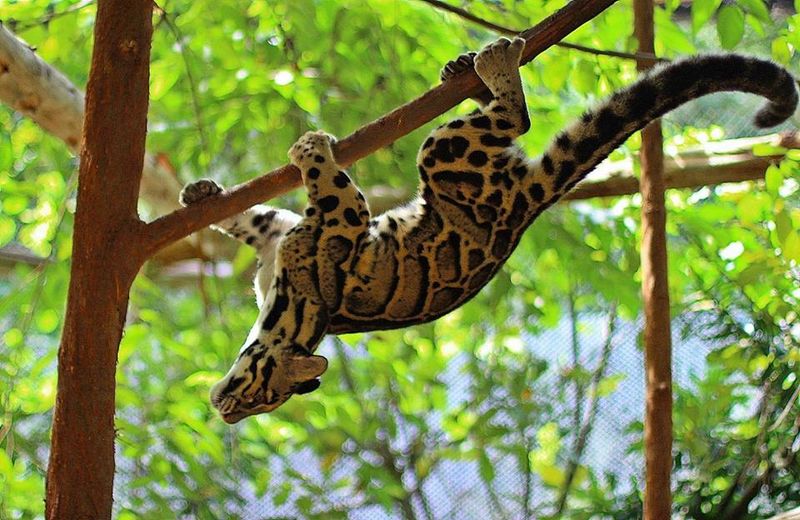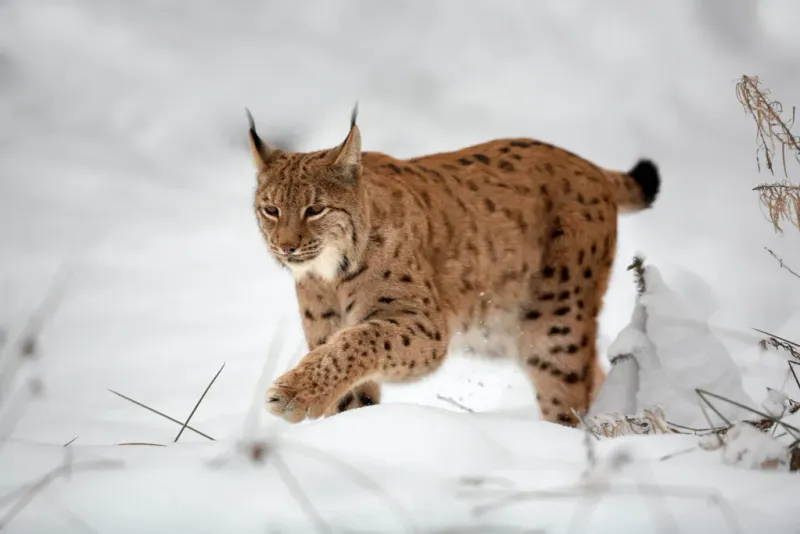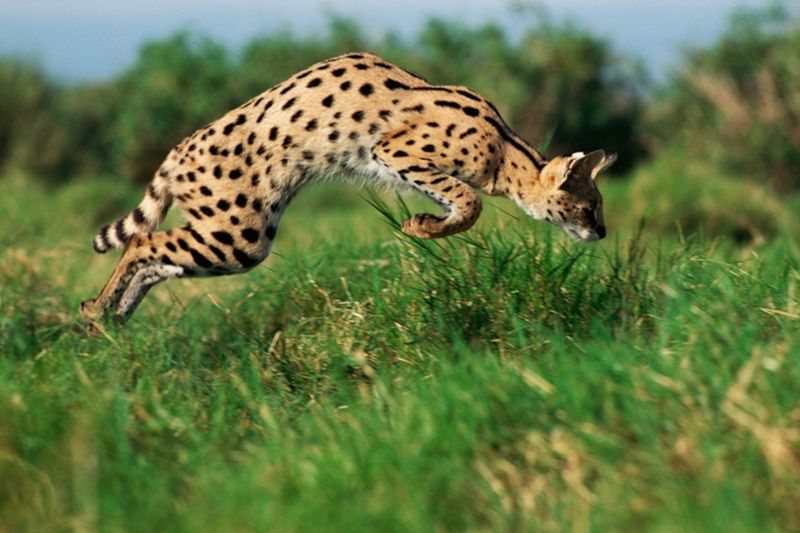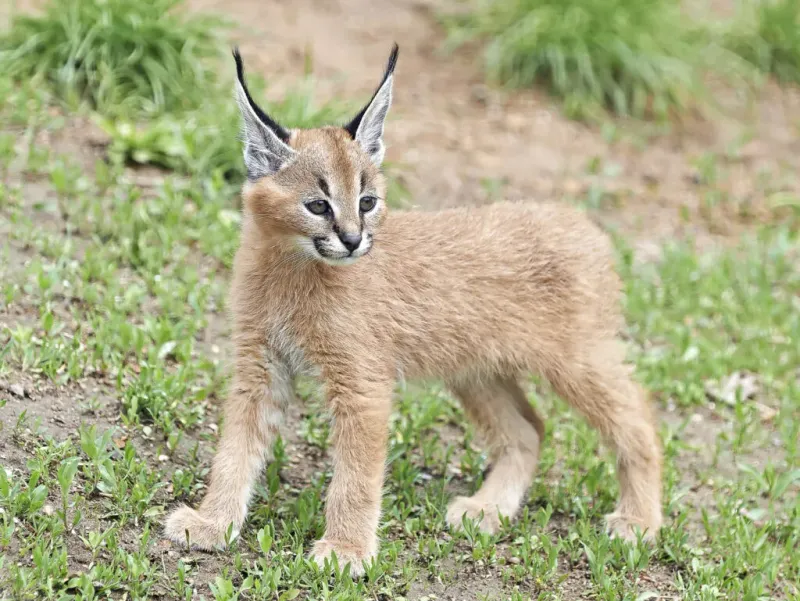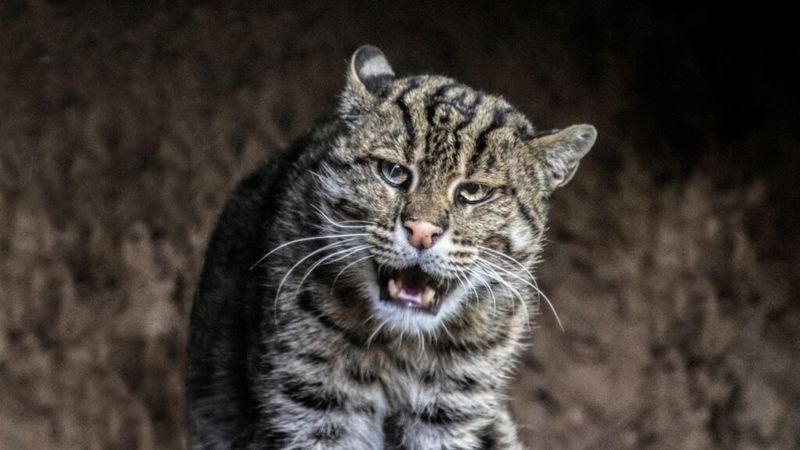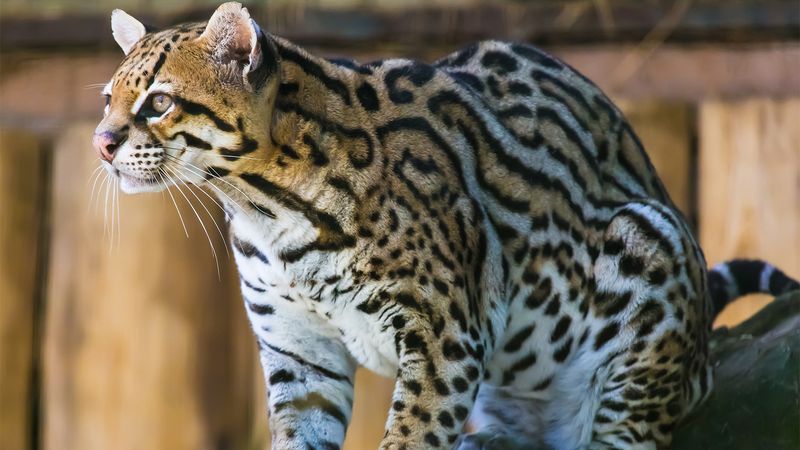📖 Table of Content:
Big cats are often celebrated for their sheer strength and commanding presence. Yet beneath their muscular frames lies a level of agility that rivals much smaller animals. Their movements are a blend of controlled power and fluid grace.
In dense forests, open savannas, and rocky terrain, these cats adapt with astonishing precision. They leap, twist, and sprint with an ease that seems almost impossible for their size. Each species has developed unique physical traits to master its environment.
Whether launching into the air or scaling steep surfaces, their agility adds to their mystique. It’s not just speed or strength that sets them apart, but the way they move with purpose and balance. These 13 big cats are true athletes of the animal kingdom.
1. Tiger
Tigers weigh up to 660 pounds yet can leap over 16 feet horizontally and 12 feet vertically. Their massive frame conceals remarkable flexibility, allowing them to twist mid-air during hunts.
These striped predators navigate dense forests with silent precision, moving through undergrowth without making a sound. Their padded paws distribute weight evenly, enabling stealthy approaches.
Tigers also swim exceptionally well, unlike most cats. They can cross rivers several miles wide and have been clocked swimming at 4 miles per hour for hours without tiring—an unexpected talent for such large animals.
2. Lion
Adult male lions can weigh over 500 pounds, yet they reach speeds of 50 mph in short bursts. Their bulky appearance masks incredible explosive power in their hind legs.
Female lions display even greater agility during cooperative hunts. They seamlessly coordinate complex flanking maneuvers while maintaining perfect balance at high speeds.
Cubs develop agility through play, practicing the quick directional changes needed for hunting. A lion’s spine is extraordinarily flexible, allowing them to make sharp turns while chasing prey—a surprising capability considering their barrel-chested build.
3. Jaguar
Behind the jaguar’s compact, powerful frame lies an unexpected talent for climbing. Known for their crushing bite, these cats also scale trees with effortless grace. It’s not uncommon to see them dragging massive kills high into the canopy.
Unlike other big cats, jaguars are excellent swimmers. They move through water with smooth efficiency, even hunting caimans and capybaras in rivers.
Their compact body structure enables them to maneuver through dense rainforest undergrowth without making a sound. Jaguars can also leap up to six times their body length from a standstill position—an astonishing feat for such a powerfully built animal.
4. Leopard
Don’t be fooled by the leopard’s lean frame—these cats possess immense strength. They regularly haul kills several times their weight into trees, far from scavengers.
These spotted cats can descend trees headfirst, a rare ability among felines. Their ankles rotate 180 degrees, allowing them to grip bark securely while moving downward face-first.
Leopards excel at maneuvering through tight spaces. They can squeeze through openings just 4 inches wider than their skull, compressing their flexible ribcage to pass through narrow gaps—a surprising talent that belies their solid, muscular build.
5. Snow Leopard
Graceful and surefooted, snow leopards scale steep, rocky slopes with remarkable control. Their lengthy, plush tails provide balance and steer them mid-leap like built-in rudders.
These mountain cats can leap up to 50 feet in a single bound across rocky terrain. Their oversized paws act as natural snowshoes, distributing weight evenly across soft snow.
Despite appearing bulky due to their thick fur, snow leopards possess incredibly light frames. They weigh just 75-120 pounds, with specialized shoulder blades that rotate independently, allowing them to maintain balance on the narrowest mountain ledges while moving at surprising speeds.
6. Cheetah
Cheetahs are famous for speed but less known for their extraordinary maneuverability at high velocities. Their semi-retractable claws work like cleats, providing traction during sharp turns at 60+ mph.
The cheetah’s flexible spine acts like a spring, compressing and extending with each bound. This specialized anatomy allows them to change direction mid-sprint with minimal loss of momentum.
Their enlarged nasal passages and lungs enable oxygen-efficient running while their lightweight frame—typically just 70-140 pounds—contributes to their agility. Cheetahs can accelerate from 0 to 45 mph in just 2.5 seconds, making them more nimble than many sports cars.
7. Cougar
From a standstill, cougars can launch themselves 18 feet into the air. Their powerful back legs, masked by a sleek build, deliver incredible upward force. Cliff ledges and rocky outcrops become effortless stepping stones.
These adaptable cats maintain balance while running across fallen logs and narrow ridges. Their muscular tails function as counterweights during precarious traverses through mountainous terrain.
Cougars excel at quick directional changes while pursuing prey through forests. They can rotate their front paws inward while running, allowing for rapid pivoting movements without losing speed—a specialized adaptation that enables them to navigate complex environments with surprising agility.
8. Clouded Leopard
Though equipped with saber-like canines, clouded leopards are agile marvels of the animal world. Their unique ankle joints can rotate 180 degrees, allowing effortless headfirst descents from trees. Strength and flexibility meet in one extraordinary feline.
These medium-sized cats have the shortest legs relative to body length among felines. This low center of gravity provides exceptional balance while navigating narrow branches.
Their tails nearly match their body length, functioning as counterweights during complex arboreal maneuvers. Clouded leopards can hang from branches using only their hind feet, freeing their front paws to manipulate prey—an unusual capability that makes them the gymnasts of the big cat world.
9. Eurasian Lynx
The Eurasian lynx appears stocky and robust but can leap over 25 feet horizontally. Their compact bodies contain powerful muscles that generate explosive force when pouncing on prey.
These northern cats have oversized paws that function as natural snowshoes. The wide surface area prevents them from sinking into deep snow, allowing quick movement across winter landscapes where other predators struggle.
Lynx ears feature distinctive tufts that enhance their already exceptional hearing. They can detect small movements under snow, pinpointing prey with precision before executing perfectly timed pounces from a standstill position—a remarkable combination of sensory acuity and physical agility.
10. Serval
Servals have the longest legs relative to body size of any cat, giving them an almost awkward appearance. This specialized anatomy allows them to see over tall savanna grasses and execute vertical leaps up to 10 feet high.
Their oversized ears can rotate independently, pinpointing the exact location of rodents moving underground. Servals combine this sensory precision with remarkable jumping accuracy.
These specialized hunters catch birds in mid-flight by leaping straight upward with pinpoint timing. They can also plunge headfirst into tall grass, using their front paws to pin prey—a hunting technique requiring extraordinary balance and coordination that belies their somewhat gangly appearance.
11. Caracal
Leaping like arrows into the sky, caracals use precision and power to intercept birds midair. Their athletic bodies can propel them more than 12 feet upward. During these dramatic jumps, they often bat down multiple birds in a single fluid motion.
These medium-sized cats have powerful hind legs that generate tremendous vertical force. Despite weighing up to 40 pounds, they move with the lightness and grace of cats half their size.
Caracals feature unique ear tufts that may help them communicate through subtle movements. They excel at quick directional changes while hunting, rotating their entire body mid-air to adjust trajectory—an impressive display of aerial control that contradicts their somewhat robust appearance.
12. Fishing Cat
Fishing cats appear stocky and solid but display remarkable aquatic agility. They dive completely underwater to catch fish, using their partially webbed paws to swim with surprising speed and precision.
Unlike most felines, these specialized hunters have a water-resistant double-layered coat. They can remain comfortable while swimming in cold water for extended periods, stalking prey both above and below the surface.
Fishing cats have been observed tapping the water’s surface to mimic insect movements, attracting fish within striking range. They then execute lightning-fast paw strikes or full-body dives—complex hunting behaviors requiring exceptional coordination and agility that contradict their somewhat heavy-set appearance.
13. Ocelot
Ocelots navigate the rainforest canopy with incredible precision. Their flexible ankle joints rotate to grip branches while moving both upward and downward through dense vegetation.
These medium-sized cats possess exceptional night vision, allowing them to leap between trees in near-total darkness. Their retinas contain three times more rod cells than human eyes, enabling accurate distance judgment during complex nocturnal movements.
Ocelots can rotate their ears independently to track prey moving in multiple directions. They combine this sensory advantage with remarkable physical coordination, executing silent, targeted pounces from elevated positions—a hunting strategy requiring extraordinary balance and spatial awareness that contradicts their relatively solid appearance.
